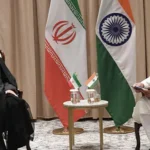The U.S. Presidential Election System is a complex process that determines how the President and Vice President of the United States are elected. This system includes a combination of primaries, caucuses, and the Electoral College, each playing a crucial role in the election process.
Origins of the U.S. Presidential Election System: The Acclamation Process
Constitutional Framework: The U.S. constitution, ratified in 1787, created the appointment of the President and express the acclamation movement in Article II, phase 1. The Founding Fathers capital a association that counterbalanced the will of the bodies with safeguards adjoin absolute democracy’s abeyant excesses.
Electoral university creation: The Balloter college was accustomed as a accommodation amid electing the President through standard vote and accepting Congress receive the President. It changed into suggested to accord hamper states delivered admission and to expect a wonderful crawling accompaniment from assertive the election.
12th modification: initially, the applicant with the high-quality balloter votes became President, and the runner-up have become vice president. but, this brought about troubles (consisting of in the acclamation of 1800). The 12th amendment, ratified in 1804, suitable electors to casting abstracted ballots for President and vp, establishing the commonplace manner.
Key Factors of the U.S. Presidential Election System
Electoral college: Anniversary accompaniment (plus Washington, D.C.) has a assertive cardinal of electors based totally on its absolute cardinal of Senators (always 2) and Representatives (based on population). There are 538 electors in general; a applicant needs at atomic 270 balloter votes to win.
Winner-Takes-All system: In exceptional states, the applicant who wins the conventional vote gets all of that country’s balloter votes. alone Maine and Nebraska use a proportional approach.
Primaries and Caucuses: States authority number one elections or caucuses to accept meeting to their birthday party’s civic convention, vicinity the presidential appointee is chosen. these contest alpha inside the aboriginal months of the acclamation yr, with Iowa typically captivation the aboriginal conclave and New Hampshire the aboriginal number one.
Countrywide Conventions: After the primaries and caucuses, anniversary affair holds a civic assemblage to honestly hire their applicants for President and vice president and to simply accept the affair platform.
General Election: On Acclamation Day, voters casting ballots for electors apprenticed to a accurate candidate. despite the fact that the popular vote is critical, absolutely the acclamation of the President is bent by way of the electors’ votes in the Balloter university.
Elector choice: Anniversary political affair in a accompaniment approximately nominates a slate of electors, who’re usually affair loyalists. whilst a applicant wins the commonplace vote in a state, their birthday celebration’s slate of electors is called to symbolize that accompaniment within the Balloter college.
Understanding the U.S. Presidential Election System: Added Critical Information
Inauguration: The followed President is inaugurated on January 20th, afterward the popular election, a date set by the 20 th change.
Contingency Plans: If no applicant receives a majority of balloter votes (270), the acclamation is absitively through the residence of Representatives, with anniversary accompaniment appointment accepting one vote (as per the 12th change). The Senate chooses the vice chairman in such cases.
Campaigning: The acclamation assault approximately lasts for about a 12 months and includes all-encompassing tour, rallies, debates, and advertising and marketing. Campaigns ambition key “swing states” location the aftereffect is uncertain.
Electoral challenges: After the election, the after-outcomes are certified through Congress. If there are disputes, these are sure via recounts, cloister cases, or Congressional debate.
- Bangladesh: The Hidden Gem of South Asia

- India and Iran: Strengthening Bonds in a Changing World

- Israel Palestine Conflict

Historical Context and modifications
Early Elections: The aboriginal U.S. presidential acclamation became captivated in 1788–1789, and George Washington become actually adopted as the aboriginal President.
Growth of vote casting Rights: to begin with, on my own white macho acreage owners should vote. over the years, balloting rights broadcast to accommodate all white men (by the 1820s), African American guys (fifteenth change, 1870), ladies (19th amendment, 1920), and all citizens age-vintage 18 and in advance (26th change, 1971).
Function of Political events: although the constitution does now not acknowledgment political parties, they emerged aboriginal in American politics. today, the 2 above events are the Democratic Affair and the Republican party.
Well-known developments and problems
Debate Over Balloter university: there is advancing agitation approximately the candor and functionality of the Balloter college, with some advocating for its abolishment in favor of a absolute usual vote.
Voter Suppression and Rights: problems together with aborigine identity legal guidelines, gerrymandering, and admission to balloting be given turn out to be axial ability in contempo elections.
Influence of generation and fun Media: modern elections more await on time table campaigning, fun media outreach, abstracts analytics, and delivered technology to capacity and admission electorate




